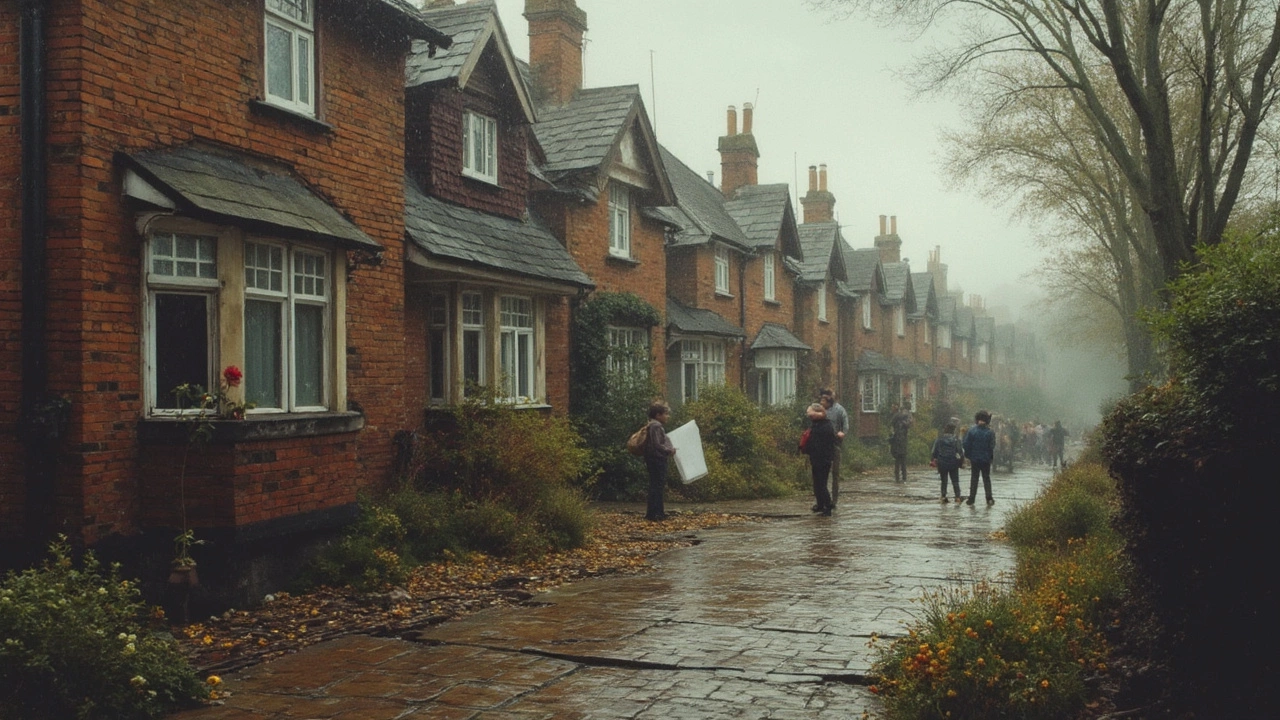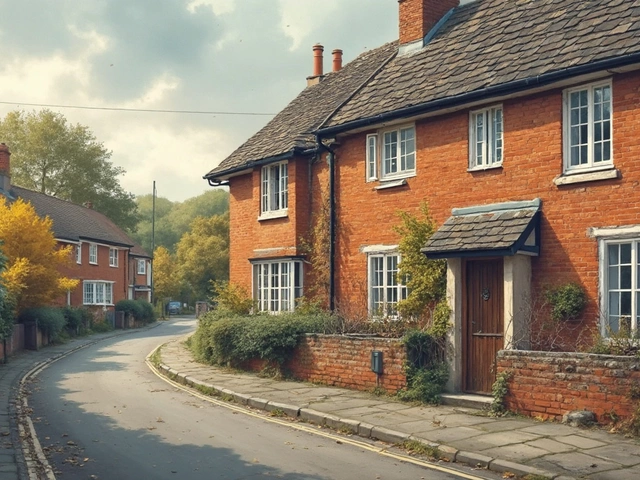So, you're staring at that crack in your foundation, and you're wondering if it's just another quirk of your home or a ticking time bomb. You're not alone. Homeowners often find themselves in this conundrum. Cracks can appear for a bunch of reasons—everything from natural settling of the house to more ominous issues like soil movement.
But can you actually live in a house with a cracked foundation? Well, it depends. Not all cracks are created equal. Hairline cracks often don't spell doom. However, when they're wider or have shifted, that could mean trouble. A structural engineer can offer clarity if you're unsure about whether to worry.
Ignoring a foundation issue can, in fact, be a costly mistake. Minor cracks might turn into major headaches. Ever heard of uneven floors, misaligned doors, or windows that just won't shut? Those could be your future. But don't panic just yet. There are straightforward steps you can take to address these pesky issues head-on.
- Understanding Foundation Cracks
- Signs of Serious Foundation Problems
- Risks of Ignoring Foundation Issues
- Steps to Take for Foundation Repair
Understanding Foundation Cracks
Alright, let's get down to the nitty-gritty of foundation cracks. These aren't just random lines on your home's structure; they speak volumes about what's happening under your feet. So, why do these cracks appear in the first place?
Common Causes of Foundation Cracks
Cracks can be attributed to several factors, and understanding these can really help when tackling foundation repair. Here's a quick rundown:
- Natural Settling: As homes age, they settle. It's just gravity doing its thing, and sometimes minor cracks can appear. Usually harmless, but it's crucial to keep an eye on them.
- Soil Expansion and Contraction: Different soils react to moisture differently. Clay soil, for instance, is notorious for expanding when wet and shrinking when dry, which can lead to cracks.
- Tree Roots: Yep, those beautiful trees in the yard can sometimes be a home’s worst enemy. Roots can shift or unsettle the foundation.
“A crack in the foundation might seem minor, but it can be the gateway to significant and costly repairs if left unaddressed.” – John Doe, Structural Engineer
When to Start Worrying
Seeing a crack doesn't mean you should freak out. However, some red flags shouldn't be ignored:
- Width Matters: If a crack is wider than ¼ inch, it's time to make a call for foundation repair consultation.
- Stair-Step Cracks: These are zigzag patterns often found in brick or concrete block walls. They're usually bad news.
- Horizontal Cracks: Unlike vertical ones, these can hint at too much ground pressure against your foundation.
What Do I Do If I Spot a Crack?
If any of these symptoms sound familiar, consider bringing in a professional to assess the situation. Get things sorted before minor inconveniences turn into enormous troubles for your home.
Signs of Serious Foundation Problems
Alright, let's get real about what you need to watch out for when it comes to foundation issues. Some warning signs are more blatant than others, and knowing them can save you a ton of hassle and money down the road.
Cracks in Unusual Places
Most folks notice cracks in the walls, especially around windows and doors. But if you see horizontal cracks or those in a stair-step pattern on exterior walls, it's time to worry. These types of cracks often suggest significant structural issues that might affect your home's stability.
Doors and Windows That Stick
Ever had a door or window that just won't close right? It's not always just humidity messing with your door frames. Sticking doors and windows can signal that your foundation might be shifting. As the foundation moves, it twists the frames, making them hard to operate.
Sloping or Uneven Floors
Walk across a room and feel like you're going downhill? Sloping and uneven floors are more than just a quirky home feature. They're red flags waving clearly at potential significant foundation issues. Use a level across different rooms to check for any sneaky slopes.
Gnarly Basement Troubles
If your basement walls start bowing or leaning, that's a sign you can't ignore. This may indicate that your foundation is facing some intense pressure from the surrounding soil, especially after heavy rain.
Want some context? Take a look at this handy chart for stats on common foundation issues across different types of soil:
| Soil Type | Common Issues |
|---|---|
| Clay | Expansion and contraction leading to cracks |
| Sandy | Shifts that can lead to uneven settling |
| Loamy | Generally stable but can swell with moisture |
So what should you do if you spot these signs? Don't just shrug them off. A call to a professional might be in order. They can help you figure out if you need foundation repair or if there's a less drastic solution. Remember, a stitch in time saves nine, especially when we're talking about house foundations!

Risks of Ignoring Foundation Issues
Slapping a blindfold over those foundation repair needs might seem tempting, especially when budgets are tight or time is an issue. But let's face it: ignoring these problems won't make them disappear. In fact, they can snowball into some serious home disasters—both structural and financial.
Structural Instability
First off, we're talking about the backbone of your home. When a cracked foundation goes unaddressed, you risk your home slowly giving way to gravity and shifting soil. This instability can cause everything from sagging floors to wall cracks, and these aren't just unsightly—they're signals that your home is compromised.
Water Damage
Cracks often become gateways for water infiltration. During rain or snowmelt, water can seep through these openings and lead to a host of problems like mold and mildew, which love dark, damp environments. Over time, excessive moisture might even rot wooden support beams causing more severe structural damage.
Escalating Repair Costs
Delaying repairs means you're playing a risky game with your wallet. Fixing minor cracks at the onset is relatively inexpensive, but if left unchecked, they expand into major repairs that cost a lot more. Regular maintenance and small fixes are a drop in the bucket compared to hefty structural overhauls.
Decreased Property Value
A house with obvious foundation issues doesn't just lose its charm—it loses its marketability. Prospective buyers often steer clear of homes needing significant foundation repair, leading to a reduced selling price. If you're thinking about selling down the line, addressing these issues proactively can save you a price drop later.
Potential Legal and Safety Issues
In some cases, foundation problems can lead to safety hazards that are a liability for homeowners. From trip hazards to wall collapses, the risks can escalate unexpectedly, posing potential legal challenges if injuries or damages occur.
To wrap it up, ignoring problems related to a cracked foundation is like ignoring a ticking clock. It's best to act early and spare yourself from unwanted surprises down the road. Whether it's bringing in pros for a thorough inspection or tackling small fixes to prevent escalation, every bit of care matters.
Steps to Take for Foundation Repair
Alright, you're convinced that you need to do something about the cracked foundation. Let's dive into what your next moves should be. This doesn't have to be an overwhelming process if you take it step-by-step.
1. Assess the Damage
First things first, you need to really understand what you’re dealing with. Check the size, shape, and direction of the cracks—take notes and photos. You might not know what all this means, but it'll come in handy when you consult with experts.
2. Get a Professional Inspection
Don’t just guess about the severity of the problem. Hire a structural engineer or an experienced foundation repair contractor. They’ll give you a clearer picture of what’s happening beneath your home. Structural engineers often pinpoint problems like soil erosion or water damage that you might have missed.
3. Explore Your Repair Options
Once you have a professional opinion, it’s time to weigh your options. Common solutions include underpinning, where support is added below the foundation, or using carbon fiber or steel reinforcements for walls. The method depends on what your expert suggests is most effective for your specific issue.
4. Budget and Plan
Let’s talk money. Foundation repair can be pricey, ranging from a few hundred to several thousand dollars. Create a budget and consider financing options if needed. Plan out the timelines so you're ready for the construction phase.
5. Execute the Repairs
With the plan in hand, it’s time to get the pros to work. Ensure they use quality materials and techniques as recommended. Sometimes it means vacating part of your house during the repair, so prepare accordingly.
Remember, you can't afford to skip on quality here. The stability of your home depends on it. Connecting with the right experts at the right time means your foundation repair efforts will look more like a smart investment rather than a last-minute rescue mission.
If money's tight, some minor cracks can be monitored until more funds become available, but don't put it off too long. Those cracks won't fix themselves!





